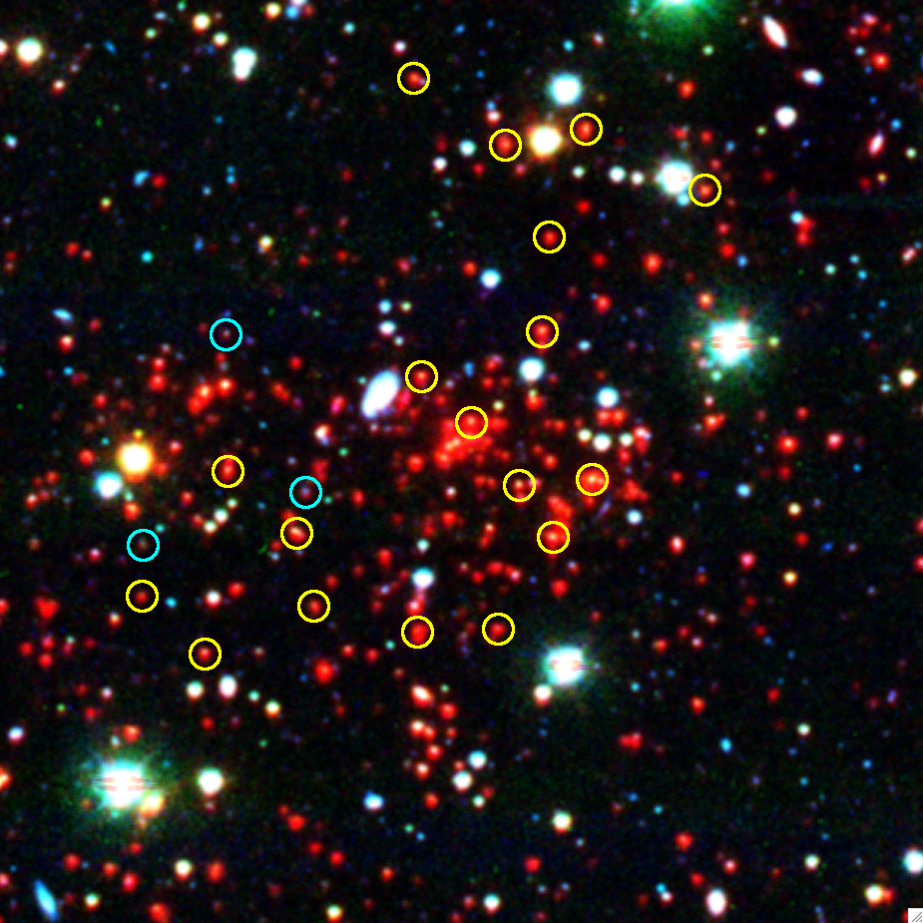Image List
-

An infrared/optical representative-color image of a massive galaxy cluster located 7 billion light-years from Earth. This cluster weighs as much as 800 trillion Suns. Galaxies with "old" stellar populations, like modern-day ellipticals, are circled in yellow; galaxies with "young" stellar populations, like modern-day spirals, are circled in blue. Images taken with the Infrared Array Camera on the Spitzer Space Telescope and the Mosaic-II camera on the Blanco 4-meter telescope at the Cerro Tololo Inter-American Observatory. The field of view is 4 x 4 arcminutes.
Infrared Image: NASA/JPL-Caltech/M. Brodwin (Harvard-Smithsonian CfA) Optical Image: CTIO Blanco 4-m telescope/J. Mohr (LMU Munich) -

This optical image of the newfound galaxy cluster highlights how faint and reddened these galaxies are due to their great distance. The cluster remained hidden until the South Pole Telescope spotted it by looking for distortions in the cosmic microwave background. (Such distortions are called the Sunyaev-Zel'dovich effect.) The blue streak is a satellite passing through the field of view during the timed exposure. The field of view is 4 x 4 arcminutes.
CTIO Blanco 4-m telescope/J. Mohr (LMU Munich)